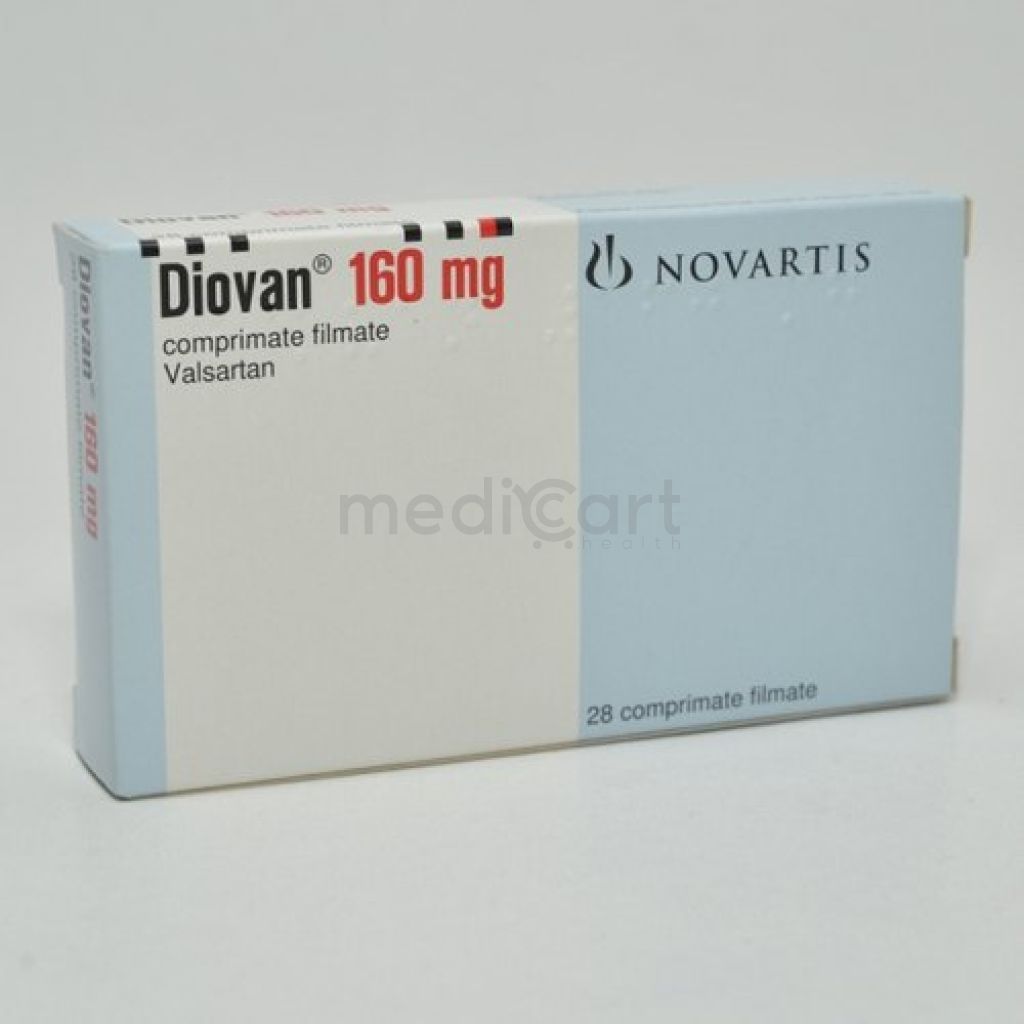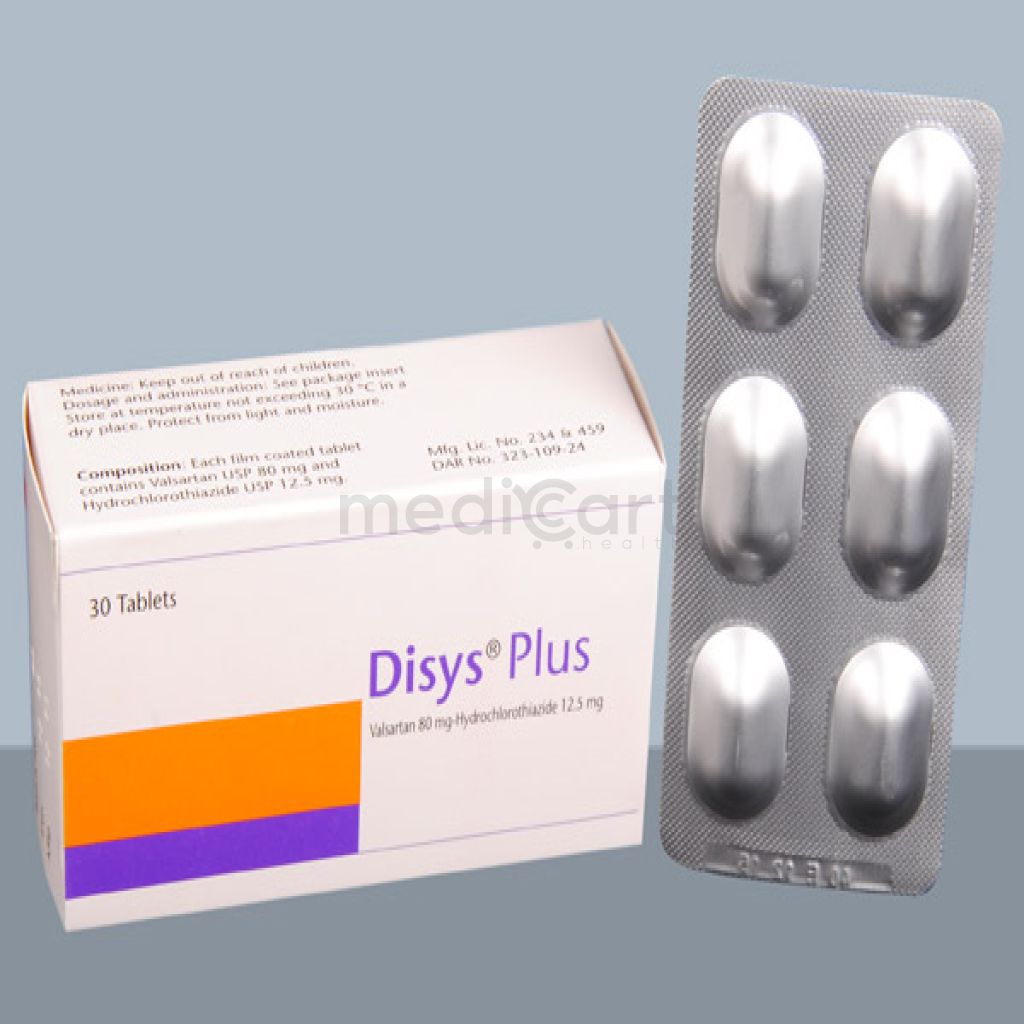

Diovan - 160mg
Tablet
Pack Size :
14 Tablet x 1 Strip
Generics :
Valsartan
Manufacturer :
Novartis (Bangladesh) Ltd.
Best Price *
TK
798.00
* Delivery will be done in Dhaka city only.
Alternative Product
More Information About - Diovan - 160mg
Description
Generic Name
ValsartanPrecaution
Patients w/ renal artery stenosis, heart failure, aortic or mitral stenosis, severe Na and/or volume depletion. Renal and mild to moderate hepatic impairment. Lactation. Monitoring Parameters Monitor BP, electrolytes, renal function. Monitor serum K levels every dose increment and periodically thereafter.Indication
Heart failure, Hypertension, Post myocardial infarctionContra Indication
Hypersensitivity; severe hepatic impairment, cirrhosis or biliary obstruction; primary hyperaldosteronism. Pregnancy (2nd and 3rd trimesters) and lactation.Dose
N/ASide Effect
>10% Dizziness (17%; heart failure),Increased blood urea nitrogen (BUN; 17%) 1-10% Hyperkalemia (4-10%),Dizziness (2-8%; hypertension),Hypotension (1-7%; heart failure),Fatigue (3%),Viral infection (3%),Neutropenia (2%),Syncope (>1%),Upper abdominal pain (>1%),Vertigo (>1%) Frequency Not Defined Headache,Cough (rare) Potentially Fatal: Blood dyscrasias (e.g. neutropenia).Pregnancy Category
Name : Not Classified
Description
FDA has not yet classified the drug into a specified pregnancy category.Mode of Action
Valsartan, an angiotensin II type 1 (AT1) receptor antagonist, produces its BP lowering effects by inhibiting angiotensin II-induced vasoconstriction, aldosterone release and renal reabsorption of Na.Interaction
May antagonise hypotensive effects and increase the risk of renal impairment w/ NSAIDs. Increased risk of hyperkalaemia w/ K-sparing diuretics, K supplements or K-containing salt substitutes. Potentially Fatal: Increased risk of hypotension, hyperkalemia and changes in renal function (including acute renal failure) when used w/ aliskiren in patients w/ diabetes and renal impairment (GFR <60 mL/min).Pregnancy Category Note
Pregnancy The drug can cause fetal harm when administered to a pregnant woman; use of drugs that act on renin-angiotensin system during second and third trimesters of pregnancy reduces fetal renal function and increases fetal and neonatal morbidity and death Most epidemiologic studies examining fetal abnormalities after exposure to antihypertensive use in first trimester have not distinguished drugs affecting the renin-angiotensin system from other antihypertensive agents When pregnancy is detected, discontinue therapy as soon as possible Hypertension in pregnancy increases maternal risk for pre-eclampsia, gestational diabetes, premature delivery, and delivery complications (eg, need for cesarean section, and post-partum hemorrhage) Hypertension increases fetal risk for intrauterine growth restriction and intrauterine death; pregnant women with hypertension should be carefully monitored and managed accordingly Fetal/neonatal adverse reactions Oligohydramnios in pregnant women who use drugs affecting the renin-angiotensin system in second and third trimesters of pregnancy can result in reduced fetal renal function leading to anuria and renal failure, fetal lung hypoplasia, skeletal deformations, including skull hypoplasia, hypotension and death Perform serial ultrasound examinations to assess the intra-amniotic environment; fetal testing may be appropriate, based on the week of gestation; oligohydramnios may not appear until after the fetus has sustained irreversible injury If oligohydramnios is observed, consider alternative drug treatment; closely observe neonates with histories of in utero exposure to the drug for hypotension, oliguria, and hyperkalemia; in neonates with a history of in utero exposure to the drug, if oliguria or hypotension occurs, support blood pressure and renal perfusion Exchange transfusions or dialysis may be required as a means of reversing hypotension and replacing renal function Lactation There is limited information regarding presence of the drug in human milk, effects on breastfed infant, or on milk production; the drug is present in rat milk Because of the potential for serious adverse reactions in breastfed infants, breastfeeding is not recommended during treatment with this drugAdult Dose
Oral Hypertension Adult: Initially, 80 mg once daily, may be increased to 160 mg once daily if needed. Max: 320 mg once daily. Heart failure Adult: Initially, 40 mg bid, may be increased to 160 mg bid if tolerated. Post myocardial infarction Adult: Start as early as 12 hr after MI in stable patients at an initial dose of 20 mg bid, doubled at intervals over a few wk up to 160 mg bid if tolerated. Elderly: No dosage adjustment needed. Hepatic impairment: Mild to moderate: Max: 80 mg once daily. Severe: Contraindicated.Child Dose
Oral Hypertension Child: As tab: >6 yr <35 kg: Initially, 40 mg once daily. Max: 80 mg once daily; 35-80 kg: Initially, 80 mg once daily. Max: 160 mg once daily; >80 kg: Initially, 80 mg once daily. Max: 320 mg once daily.Renal Dose
Renal impairment CrCl >30 mL/min: No dose adjustment necessary in adults CrCl <30 mL/min: Use with caution in adults; not studied in childrenAdministration
May be taken with or without food.Disclaimer
The information provided herein are for informational purposes only and not intended to be a substitute for professional medical advice, diagnosis, or treatment. Please note that this information should not be treated as a replacement for physical medical consultation or advice. Great effort has been placed to provide accurate and comprehensive data. However, Medicart along with its authors and editors make no representations or warranties and specifically disclaim all liability for any medical information provided on the site. The absence of any information and/or warning to any drug shall not be considered and assumed as an implied assurance of the Company.










